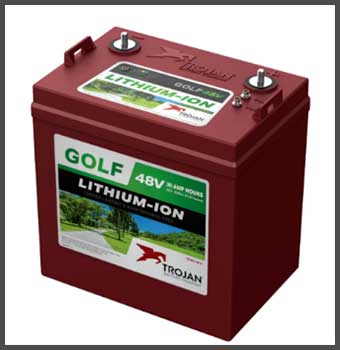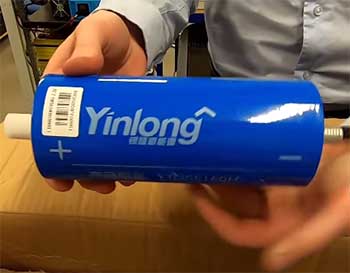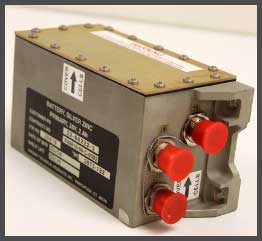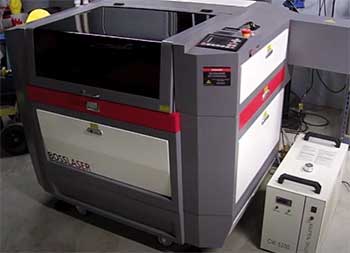The 4DLT battery is a popular choice for many applications due to its reliable performance and reasonable cost. However, as technology advances, new battery chemistries are emerging that may provide advantages over the tried-and-true lead-acid 4DLT.
In this article, we will explore some of the top alternatives to the 4DLT battery, looking at the pros and cons of each option.
Alternatives To 4DLT Battery
Here is a list of these alternatives:
- Lithium-Ion Batteries
- Lithium Iron Phosphate Batteries
- Lithium Titanate Batteries
- AGM Lead-Acid Batteries
- Silver Oxide Zinc Batteries
- Nickel Zinc Batteries
- Sodium Sulfur Batteries
Let’s describe these alternatives in detail.
Lithium-Ion Batteries
Lithium-ion (Li-ion) batteries have become extremely popular in recent years, finding use in everything from smartphones to electric vehicles. For replacements to lead-acid batteries like the 4DLT, lithium-ion presents some distinct advantages:
Pros of Lithium-Ion Batteries:

- High energy density – Li-ion packs more power storage capacity per volume and weight
- Low self-discharge – Holds charge for longer when not in use
- No maintenance required – No need to check electrolyte or water levels
- High cycle life – Can withstand more charge/discharge cycles before degrading
- Fast charging capability – Can be recharged quickly with right equipment
- High efficiency – Less wasted energy during charge/discharge
Cons of Lithium-Ion Batteries:
- More expensive upfront cost than lead-acid
- Requires protection circuitry to operate safely
- Degrades faster in high temperature environments
- Can be damaged by deep discharge
- Shipping and transportation restrictions due to flammability concerns
Overall, lithium-ion makes an excellent replacement for many lead-acid battery applications, provided the higher initial investment can be justified by longer lifetime and reduced maintenance.
The excellent energy density of Li-ion is especially advantageous in applications where battery weight and size need to be minimized. Proper charging protocols and protective circuitry are recommended when using lithium-ion to maximize safety and battery life.
Lithium Iron Phosphate Batteries
A variant on lithium-ion chemistry gaining popularity is lithium iron phosphate, also referred to as LFP or LiFePO4 batteries. These batteries replace the traditional lithium cobalt oxide cathode material with iron phosphate, providing some distinct characteristics:
Pros of Lithium Iron Phosphate Batteries:
- Excellent thermal and chemical stability
- Increased resistance to damage from overcharging/overdischarging
- Long cycle life – can achieve 2-3 times the cycles of cobalt lithium-ion
- Good low temperature performance
- Less prone to catching fire due to thermal runaway
Cons of Lithium Iron Phosphate Batteries:
- Lower energy density than cobalt lithium-ion
- Typically requires advanced battery management system
- More expensive than lead-acid, cheaper than cobalt lithium-ion
- Lower load performance than cobalt lithium-ion
LFP chemistry makes for incredibly sturdy and safe lithium-ion batteries. Their thermal and overload resilience makes them a great choice for applications where battery failure presents a significant safety risk.
Despite lower energy density, LFP can still outperform lead-acid batteries while maintaining a long service life. They present a middle-ground option balancing cost and performance between lead-acid and conventional lithium-ion.
Lithium Titanate Batteries
An even more advanced lithium-ion variant is the lithium titanate or LTO battery. These high-end batteries use a unique nanostructured titanate cathode in place of traditional intercalated oxides. This provides enhancements in a few key areas:
Pros of Lithium Titanate Batteries:

- Extremely fast charging – can recharge fully in 10-15 minutes
- Excellent high-power performance
- Outstanding cycle life – up to 20 times more than lead-acid
- Safest lithium-ion option – no thermal runaway issues
- Performs well in cold temperatures
- Lower fire and explosion risk
Cons of Lithium Titanate Batteries:
- Very high cost compared to all alternatives
- Low energy density – not suitable for energy storage
- Complex manufacturing process makes scaling production difficult
With their incredibly fast charge and discharge performance, lithium titanate batteries are tailored towards high-power applications rather than energy storage.
Their safety and cycle life advantages make them well-suited for uses like electric vehicles and battery-based industrial equipment.
However, their expense and production obstacles have limited their widespread commercial adoption so far.
AGM Lead-Acid Batteries
For cost-sensitive applications where lithium-ion alternatives remain prohibitively expensive, absorbed glass mat (AGM) lead-acid batteries offer an incremental upgrade over standard flooded lead-acid technology.
Pros of AGM Lead-Acid Batteries:
- Lower cost than lithium-ion options
- Good high-current performance
- Less maintenance than wet cell lead-acid
- Reduced risk of spillage or leakage
- Typically end up costing less over lifetime than wet cell
Cons of AGM Lead-Acid Batteries:
- Still contain toxic lead material
- Lower cycle life and energy density than lithium-ion
- Prone to permanent damage if deeply discharged
- Not designed for fast charging
- Eventually need recycling due to lead content
Switching to AGM technology is an easy way to gain some advantages over traditional flooded lead-acid without the drastic cost increase of shifting to lithium-ion. AGM avoids the maintenance hassles of checking fluid levels and allows safe mounting in any orientation.
While not a revolutionary change, AGM presents a viable stopgap measure before eventually upgrading to lithium-ion down the road.
Silver Oxide Zinc Batteries
An interesting alternative to consider is silver oxide zinc, also known as AgZn batteries. Based on a completely different battery chemistry, AgZn offers some unique benefits:
Pros of Silver Oxide Zinc Batteries:

- Very high power density – excellent performance for high-drain devices
- Low self-discharge – retains charge well during storage
- Capable of fast recharges
- Typically 30-40% less expensive than lithium-ion
- No toxic lead or acid
- Good high temperature tolerance
Cons of Silver Oxide Zinc Batteries:
- Shorter cycle life than lithium-ion, especially in hot conditions
- Water consumption and maintenance requirements
- Prone to damage if over-discharged
- Silver content increases cost over lead-acid
- Lower energy density than lithium-ion
With their stellar power capabilities, AgZn batteries shine for applications requiring high burst current. Their environmental friendliness gives them an advantage over lead-acid batteries as well.
Downsides like higher maintenance needs and poorer longevity make them less suitable for deep cycle applications though. On the whole, AgZn serves best for specialized high-power tasks.
Nickel Zinc Batteries
Sharing some similarities with AgZn, nickel zinc (NiZn) batteries offer an additional alternative chemistry:
Pros of Nickel Zinc Batteries:
- No toxic materials like lead or cadmium
- High power density and fast recharge ability
- Low cost materials compared to lithium-ion
- Capable of high discharge rates
- Good performance in cold temperatures
Cons of Nickel Zinc Batteries:
- Short cycle life, especially at higher temperatures
- Prone to dendrite formation after recharges
- Require ventilation for gas evolution
- Higher self-discharge than other alternatives
- Still in relatively early stages of commercialization
The biggest advantage nickel zinc provides over AgZn is its lower materials cost, given the higher abundance of nickel compared to silver. However, challenges around cycle life and dendrite formation have hindered widespread adoption so far. Continued research and development may be able to improve NiZn to make it more competitive for high power roles.
Also Read: 17TF Battery Equivalent.
Sodium Sulfur Batteries
Looking beyond traditional battery formats, sodium sulfur (NaS) batteries leverage high temperature molten electrodes to achieve excellent performance:
Pros of Sodium Sulfur Batteries:
- Very high energy density
- 85% charge efficiency
- Insensitivity to temperature fluctuations
- No toxic materials
- Nearly 100% recyclable
Cons of Sodium Sulfur Batteries:
- High operating temperature of 300-350°C required
- Thermal management results in low energy efficiency
- Corrosive nature of sodium polysulfide
- Short battery life compared to alternatives
- Highly sensitive to any water ingress
The exceptional energy density and efficiency of NaS make it ideal for large scale stationary energy storage. Challenges arise from the complex heating systems needed to maintain the molten electrode state.
Even a small amount of water leaking into the battery can render it unusable. These downsides relegate NaS batteries to highly specialized industrial and grid uses only. Nonetheless, continued improvements may help overcome current limitations.
Key Comparison Factors
Now that we’ve surveyed some of the popular alternatives to lead-acid 4DLT batteries, how do you decide which replacement is the best choice? Here are some key factors to weigh:
- Cost – Lithium-ion options provide better performance but at a higher upfront cost. AGM lead-acid is cheaper while still offering some gains over wet cell designs.
- Energy Density – For maximizing runtime with limited battery volume, lithium-ion alternatives outshine lead-acid chemistries.
- Power Density – When bursts of high power are required, AgZn and NiZn options excel, followed by lithium titanate.
- Cycle Life – The lithium phosphate and lithium titanate options offer vastly longer cycle lifetimes over lead-acid.
- Charge Rate – Lithium titanate batteries uniquely enable charge times as fast as 10-15 minutes.
- Maintenance – AGM lead-acid and all lithium-ion options require far less maintenance than wet cell lead-acid.
- Temperature Resilience – Lithium titanate and sodium sulfur designs hold up well in high and low temperature conditions.
- Toxicity – Both AgZn and NiZn provide greener alternatives to lead-acid’s toxic heavy metals.
Carefully prioritizing which factors matter most for your specific application will help determine the ideal 4DLT replacement. In many instances, lithium-ion solutions present the best blend of features for an upgrade.
Also Read: Differences Between Autozone and Walmart Batteries.
Frequently Asked Questions (FAQ)
4DLT is a designation for a common group size format of flooded lead-acid batteries. The “4D” indicates a large capacity battery for deep cycle applications, while “LT” means lower maintenance requirements compared to starter batteries. Overall, 4DLT describes a versatile, large lead-acid battery often used for RV, marine, and renewable energy storage applications.
Within the 4DLT group size, popular configurations include 6V, 8V, and 12V variants. The 6V format uses 3 cells for a total voltage of 6V. Two 6V batteries can then be combined in series to produce a 12V bank, which is a very common setup. Other formats like golf cart batteries may wire six 2V cells for 12V.
Given their large capacity design, 4DLT batteries tend to be fairly heavy. A typical 100Ah 4DLT battery weighs approximately 65-70 lbs. Higher capacity versions can approach 100 lbs or more. Compared to lithium-ion replacements that may weigh 50% less, the heavy weight of lead-acid is a disadvantage. Proper mounting and handling equipment should be used.
While dimensions can vary across manufacturers, typical 4D batteries measure around 20-21 inches long by around 9 inches wide and tall. The large format accommodates more lead plates required to achieve capacities ranging from 85-200Ah. Newer lithium-ion replacements can achieve similar capacities in smaller, lighter packages.
Final Thoughts
When evaluating replacements for venerable lead-acid batteries like the 4DLT, lithium-ion alternatives offer the best blend of enhanced performance and manageable cost. More advanced lithium technologies provide further benefits for demanding applications despite their premium pricing.
With continued development, we can expect lithium-ion batteries to become accessible replacements across most markets where lead-acid batteries currently dominate.
Nonetheless, lead-acid technology will likely maintain a cost-effective role in less demanding applications for years to come.

